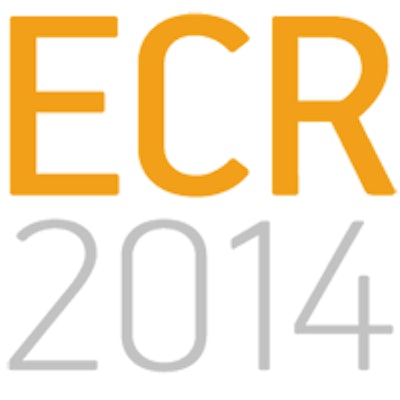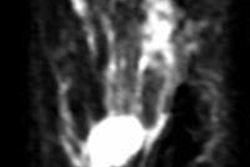
VIENNA - Older does not connote wiser, at least in the case of breast radiographers. In a surprising study from the Netherlands presented on Thursday at ECR 2014, researchers found that new radiographers performed better than experienced ones in terms of breast positioning.
In the Netherlands, radiographers must complete an initial educational course before working in the Dutch breast screening program. The course consists of a theoretical part (four days) and a practical training period (six weeks). A portfolio of 50 mammograms, randomly selected from screening practice, is part of the examination. Audits -- part of the quality assurance program -- are also conducted, with a review of positioning. In addition, a refresher course is given once every three years.
Cary van Landsveld-Verhoeven, a referent radiographer from the National Expert and Training Center for Breast Cancer Screening, and colleagues analyzed 7,079 craniocaudal (CC) and mediolateral oblique (MLO) views from portfolios, along with 13,678 CC audit views and 14,896 MLO audit views from experienced radiographers. All mammograms were reviewed based on prespecified criteria such as depiction of the inframammary angle and nipple in profile.
Positioning was more adequate for new radiographers than experienced radiographers (96.5% versus 86.4% for CC views; 91.9% versus 84.5% for MLO views). Mammograms from experienced radiographers were more often poor because the errors were more severe, van Landsveld-Verhoeven said.
For the CC views, the new radiographers scored better for most of the criteria. They had fewer problems with bucky height (5.6% versus 9.2%) and fewer lateral and medial folds, compared with experienced radiographers (10.4% versus 15.6%). However, for MLO views, new radiographers encountered more difficulties, especially with symmetry (12.0% versus 5.7%) and depiction of the inframammary angle without folds (68.3% versus 58.8%).
The experienced radiographers' results are still adequate (the lower limit is 80%), but the results stress the need for continuous auditing and training in breast cancer screening programs to keep positioning skills up to date, van Landsveld-Verhoeven concluded. It also might be best to conduct individual monitoring and training when necessary, she added.
"I was surprised because normally you would think there is improvement by experience, but it seems to be the other way around," she said.
Explanations for the study's findings were not a part of the research, but van Landsveld-Verhoeven and colleagues speculated that experienced radiographers take or have less time for the examination. Another possibility could be group behavior, i.e., the activities of the experienced radiographers are copied later on.
"We used to train once every three years, but I personally prefer to do individual monitoring and training when necessary instead of once every three years," she said. "We had several changes already; we advised the responsible party, that's the National Institute for Public Health and the Environment, ... to continue monitoring and training when needed."
The researchers also implemented benchmarking for positioning technique in the audits to show where radiographers stand in relation to the rest of the country.
The quality wasn't bad from the start, she said, but it's important to keep quality at a high level.



















